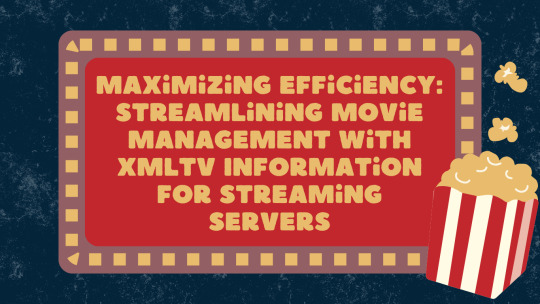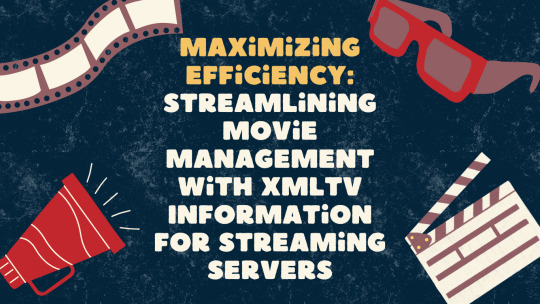#Training scalability
Explore tagged Tumblr posts
Text
eLearning development

Say goodbye to classroom costs! Embrace online learning with personalized, scalable eLearning solutions for your organization.
#Custom eLearning Solutions#Scalable Training Programs#Cost-Effective Training#Learning Technology#Flexible Learning#Modern Training Methods#Bespoke Learning Content#Training and Development#Skill Enhancement
0 notes
Text
Automatisasi Bisnis dengan Kekuatan AI
Automatisasi bisnis telah menjadi topik utama dalam dunia usaha modern. Dengan kemajuan teknologi kecerdasan buatan (AI), perusahaan kini memiliki peluang untuk mengoptimalkan proses mereka, meningkatkan efisiensi, dan mengurangi biaya operasional. AI tidak hanya menggantikan tugas-tugas manual yang berulang tetapi juga membawa kemampuan analisis data yang canggih, prediksi yang akurat, dan…
#AI automation#AI benefits#AI challenges#AI in banking#AI in business#AI in logistics#AI in retail#AI training#AI trends 2024#AI-powered tools#artificial intelligence#business automation#business innovation#cost reduction#customer experience#ethical AI#future of AI#operational efficiency#predictive analytics#scalable solutions#smart inventory management#supply chain management#workforce automation
0 notes
Text

Unlock the potential of your AI models with accurate video transcription services. From precise annotations to seamless data preparation, transcription is essential for scalable AI training.
#video transcription services#video transcription#video data transcription#AI Training#Data Annotation#Accurate Transcription#Dataset Quality#AI Data Preparation#Machine Learning Training#Scalable AI Solutions
0 notes
Text
Importance of Big Data Analytics

Strategic decision for business forecasts and optimizing resources, such as supply chain optimization.
Product development and innovation.
Personalized Customer Service to provide enhanced customer service and increase customer satisfaction.
Risk Management to identify and mitigate risks.
Optimizing the work force hence saving work and time.
Healthcare sector support by tracking patients health records of past ailments and provide advanced diagnosis and treatment.
Providing quality services like preventing crime, improve traffic management, and predicting natural disasters, optimize supply chain processes, reduce cost, improve product quality through predictive analysis, improve teaching methods through adaptive learning etc.
Helps Banking sectors track and monitor illegal money laundering and theft.
Scalability
Check out our master program in Data Science, Data Analytics and ASP.NET- Complete Beginner to Advanced course and boost your confidence and knowledge.
URL: www.edujournal.com
#Scalability#collaboration#machine_learning#training#trends#insight#data_visualization#skills#data_science#data#edujournal
0 notes
Text

Franchise & Business Consulting Services Unlock the potential of your franchise with Franchise Guru™! Our expert Franchise & Business Consulting Services cater to both Emerging Franchisors and Franchisees in Al Huda Building (Dubai), Mumbai (India), and Beirut (Lebanon). Whether you're looking to expand your business or embark on a franchising journey, our seasoned professionals are here to guide you every step of the way. Discover growth strategies, streamline operations, and achieve success with Franchise Guru™!
#Franchise Performance Metrics#Franchise Expansion Planning#Brand Development Consulting#Business Scalability Solutions#Financial Consulting for Franchises#Organizational Development Services#Franchise Legal Advice#Franchise Feasibility Analysis#Franchise Performance Analysis#Exit Strategy Planning for Franchises#Top Franchise Opportunities#International Franchise#Franchise Marketing Strategies#Entrepreneurial Franchise#Franchise Training Programs#Innovative Franchise Concepts#Home-Based Franchise#Franchise Gap Analysis#Franchise Matchmaking Services
0 notes
Text
5 Essential Tips for Maintaining Top-Notch Salesforce Org Health
Introduction: Salesforce has become an indispensable tool for businesses to manage customer relationships, streamline operations, and drive growth. However, just like any other complex system, your Salesforce organization requires regular attention and care to ensure it remains efficient, effective, and aligned with your business objectives.
In this blog, we'll explore five essential suggestions to maintain a top-notch Salesforce Org health, helping you get the most out of your investment.
Best Tips for Managing Salesforce Org Health
Regular Data Cleanup and Maintenance: A cluttered and disorganized Salesforce Org can lead to decreased user productivity, slower system performance, and inaccurate reporting. Regularly conduct data cleanup exercises to eliminate duplicate records, outdated information, and irrelevant data. Implement validation rules, workflows, and data governance processes to ensure that data entered into the system is accurate and consistent. Consider archiving or purging old records that are no longer needed, which can significantly improve system responsiveness.
Optimize User Training and Adoption: Even the most powerful tools are only as effective as the users who operate them. Invest in comprehensive user training programs to ensure that your team fully understands the features and functionalities of Salesforce. Regularly assess user adoption rates and address any issues or challenges they might face. Encourage the use of best practices and provide ongoing training as Salesforce releases updates and new features
Govern Customization and Configuration: Salesforce offers an array of customization options to tailor the platform to your specific business needs. While customization is valuable, an excessive amount can lead to complexity, slow performance, and difficulties during upgrades. Establish a clear governance framework for customization and configuration. This includes guidelines for when to use declarative tools (like Process Builder) versus custom code, as well as regular reviews of custom objects, fields, and processes to ensure they remain relevant and effective
Implement Robust Security Practices: Data security and privacy are paramount in today's business landscape. Regularly review and update your Salesforce security settings to ensure that only authorized personnel have access to sensitive information. Implement strong password policies, multi-factor authentication (MFA), and role-based access controls to minimize the risk of data breaches. Regularly audit user permissions and deactivate accounts for employees who no longer require access to the system
Stay Informed About Salesforce Updates: Salesforce continuously releases updates, enhancements, and new features to improve the platform's functionality and security. It's crucial to stay informed about these updates and assess their potential impact on your organization. Create a process for reviewing and testing new releases in a sandbox environment before rolling them out to your production Org. This practice helps identify any potential compatibility issues with your existing customizations and allows for adjustments before affecting users.
Conclusion:
Maintaining a top-notch Salesforce Org health requires a proactive approach that involves regular cleanup, user engagement, customization governance, security measures, and staying updated on platform developments. By following these five essential tips, your organization can ensure that Salesforce remains a powerful tool that contributes to your business success, helping you drive growth, streamline processes, and deliver exceptional customer experiences.
#Salesforce Org Health#Org maintenance#CRM optimization#Data integrity#Performance tuning#System health check#Data hygiene#Configuration management#Best practices#User adoption#Customization management#Security audit#Data governance#Automation tools#Regular updates#User training#Scalability#Backup and recovery#Compliance measures#Analytics and reporting
0 notes
Text
Kaladin Didn’t Invent Therapy (And Why That’s Actually Great)
“...You need someone to talk to, Noril, when the darkness is strong. Someone to remind you the world hasn’t always been this way; that it won’t always be this way.” “How do you … know this?” Noril asked. “I’ve felt it,” Kaladin said. “Feel it most days.” - Rhythm of War, Ch. 25 Devotary of Mercy
I’m writing as someone with a background in psychotherapy and peer support, and I'm bursting with excitement about one of my favourite topics. You can imagine why I love Kaladin’s arc in Rhythm of War so much! I actually yelled out loud when I read some of these parts the first time.
I’ve seen people online saying and making jokes that Kaladin invents therapy, and while that could eventually be true, what Kaladin actually invented in RoW is mental health peer support. Psychotherapy as most people would understand it simply doesn’t exist yet on Roshar. However, peer support is a legitimate modality for healing on its own merits. Even more importantly for the story, peer support is something Kaladin would personally really benefit from, and it fits his narrative arc way better than therapy would.
1. Therapy as we know it won’t exist for a while yet.
“We need to study their responses, use an empirical approach to treatment instead of just assuming someone who has suffered mental trauma is permanently broken.” - Rhythm of War, Ch. 25 Devotary of Mercy “Someone needs to talk to them, try different treatments, see what they think works. What actually helps.” - Rhythm of War, Ch. 25 Devotary of Mercy
Obviously, Kaladin has not been educated in battle shock or melancholia or any other diagnosis. In Alethkar there's hardly any knowledge to be had on the subject. Even now in real life, research into effective interventions for various diagnoses is still ongoing, over 100 years after modern therapy was founded.
Building an empirical knowledge base* will take time, not to mention the years it will take to train new therapists across Roshar in how to provide interventions specific to various issues. Therapy as we know it today generally includes time in mentorship with another therapist, so in a way, the first therapist isn't a therapist. 😅 In the meantime, there are people who need help today, including Kaladin.
Peer support can fill that gap because its knowledge base is different. Peers bring their expertise, which is their years of trial and error, successes and failures - their lived experience. Peer facilitators need to know the basics of managing a group, and they have to be willing to share their own experiences and learn from the group. Thus, training peer leaders is relatively quick, and incredibly scalable and adaptable across cultures and many issues/diagnoses.
2. Peer Support is a distinct path to recovery that doesn’t require an expert in therapy.
Kaladin located six men in the sanitarium with similar symptoms. He released them and got them working to support each other. He developed a plan, and showed them how to share in ways that would help...Today they sat in seats on the balcony outside his clinic. Warmed by mugs of tea, they talked. About their lives. The people they’d lost. The darkness. - Rhythm of War, Ch. 33 Understanding “While you can’t force it, having someone to talk to usually helps. You should be letting him meet with others who feel like he does.” - Rhythm of War, Ch. 25, Devotary of Mercy
Kaladin is already positioning himself to align with the values of peer support. Some of these values overlap with therapy, such as dignity, respect, inclusion, hope, and trust. What makes peer support different is a particular emphasis on equal relationships, self-determination, and personal growth (Peer Support Canada, 2022).
In peer support, the group facilitator is not considered an authority like a therapist would be. A peer leader may be further on the road to recovery, but they may not be. They are expected to listen and grow just like any other group member.
Because the leader of the group is also a learner, peer support groups tend to be more collaborative and open-ended. Everyone in the group has something they can take out of it and something to give. Everyone in the group is responsible for managing their own self care, and everyone in the group is responsible for the direction of their own growth. This is different from most therapy groups, which often have a specific focus or goal that the therapist is responsible for implementing. And speaking of responsibility...
3. Peer Support Fits Kaladin’s Narrative Arc Better than Therapy
At his father’s recommendation—then insistence—Kaladin took it slowly, confining his initial efforts to men who shared similar symptoms. Battle fatigue, nightmares, persistent melancholy, suicidal tendencies. -Rhythm of War, Ch. 33 Understanding …he’d learned—these last few months—that his battle shock could take many forms. He was getting to where he could confront it. -Rhythm of War, Ch. 39 Invasion
I think everyone can agree that Kaladin needs to participate in therapy just as much as the other battle-shocked men he finds in the Devotary of Mercy.
However, in therapy, the focus is solely on the needs of the clients. A therapist should not be distracted by their own issues (when this happens, it’s called countertransference). Further, therapy is generally framed such that the therapist is the only expert in the room, which means therapists have a higher level of responsibility for how the clients are doing (which varies depending on the issue, the therapy modality, and the circumstances).
In his own recovery, Kaladin is working on trying to take less responsibility for others, so setting him up as a therapeutic authority could be harmful for him. In a position of authority, he might be tempted to replicate the hierarchical structure he was in before (which would impede his own growth), or try to save everyone (which could impede everyone's growth). He simply doesn’t have the mentorship or knowledge base he'd need to work through those issues before leading as an expert.
In contrast, the point of peer support is the mutual sharing of lived experience. The group facilitator is expected to share their own struggles (as a model of recovery), and allow others to support them. In the context of a more balanced power dynamic, Kaladin can give the other group members the space they need to grow, and he can pursue his own recovery without feeling like he’s letting others down. Also, he will be able to leave the group during KOWT without worrying that the group won't be able to run without him. Everyone in the group carries some responsibility for each other, so group members can come and go with less stress than a change in therapist would cause in group therapy.
This is the beauty of peer support. It can happen anywhere people with similar experiences get together. No formal education is required. What is required is a willingness to know yourself as well as you can; to share your experiences; to listen to others tell their stories; to question your own assumptions as you learn how others handle things differently; to look out for each other's safety; to care.
Peer support creates a place of belonging and a community repository of shared wisdom. Kaladin almost had it on Bridge Four, but his position of authority wouldn’t allow him to grow the way he needed. Peer support is what Kaladin needs - he needs a place where he can take off his armour among people who get it because they're struggling with similar issues, and without having a position of responsibility over them. When he (eventually**) attends the groups, they help him grow!
Anyway, that's why Kaladin didn’t invent therapy, and why I think that's great.
For the men chatting together softly, the change was in being shown sunlight again. In being reminded that the darkness did pass. But perhaps most important, the change was in not merely knowing that you weren’t alone—but in feeling it. Realizing that no matter how isolated you thought you were, no matter how often your brain told you terrible things, there were others who understood. - Rhythm of War, Ch. 33 Understanding
---
*Funny enough, empirical research could lead Rosharan researchers right back to peer support. Empirical research on Earth has shown that modern therapy and peer support have similar levels of effectiveness (for example, for depression and PTSD).
**Look who’s resisting attending the groups he founded…KALADIN!! (shakes fist in the general direction of the sky) (This is the most relatable passage for me in this whole book, by the way, helper types unite lmao):
Kaladin looked down at the table. Had it? Had talking to Noril helped? “He’s been avoiding joining in,” Teft said. “I haven’t,” Kaladin snapped. “I’ve been busy.” Teft gave him a flat stare. Storming sergeants. They always heard the things you weren’t saying. - Rhythm of War, Ch. 38 Rhythm of the Terrors
Peer Support Canada. (2022). Peer Support Core Values. Accessed from https://peersupportcanada.ca/ Jun 27, 2022.
#I shared this on reddit a while ago but it got archived so here#enjoy#this is not an april fools thing this is just bad timing on my part#kaladin stormblessed#rhythm of war#row spoilers#kaladin didn't invent therapy#peer support#stormlight archive#the stormlight archive#stormlight essay#stormlight meta#god i love kaladin so much
195 notes
·
View notes
Text

Please describe your company’s go-to-market strategy
Here is a detailed description of RideBoom's go-to-market strategy:
RideBoom's go-to-market strategy is focused on expanding its successful bike taxi service to additional cities across India. The key elements of their strategy include:
Target Market: RideBoom is targeting urban residents and visitors in cities with growing populations and transportation needs. They have identified cities like Agra, Kolkata, and Pune as prime markets for their bike taxi service [1].
Value Proposition: RideBoom's bike taxi service provides an efficient, affordable, and environmentally-friendly transportation option for short-distance travel in congested urban areas. It aims to alleviate traffic, reduce emissions, and offer a convenient mobility solution [1].
Pricing: RideBoom is offering competitive and affordable pricing for its bike taxi service to make it an accessible option for a wide range of customers [1].
Promotion: RideBoom is promoting its service through its mobile app, which allows users to easily book and track bike taxis. They are also offering promotional discounts for new users to drive initial adoption [1].
Sales and Distribution Channels: RideBoom is directly operating its bike taxi service in the target cities, leveraging a fleet of trained drivers. The service is accessible through the RideBoom mobile app, providing a convenient and accessible sales channel [1].
Scalability: RideBoom has a clear roadmap to continue expanding its bike taxi service to more cities in India, demonstrating a scalable and replicable go-to-market strategy [1][3].
Partnerships: RideBoom may explore strategic partnerships with local transportation authorities, businesses, or other stakeholders to further enhance its market reach and service offerings [3].
Overall, RideBoom's go-to-market strategy is focused on rapidly expanding its proven bike taxi model to new urban markets, leveraging its expertise, technology, and customer-centric approach to drive adoption and success [1][3].
#rideboom#delhi rideboom#rideboom app#ola cabs#uber#rideboom taxi app#biketaxi#ola#uber driver#uber taxi
24 notes
·
View notes
Text
Trains are a vital link in our transit systems and we couldn't function without them do their efficiency and scalability
65 notes
·
View notes
Text


This week was a productive one. I've been studying microservices to better understand distributed systems. At the bus company where I work, we use a monolithic system—an old-school setup style with MySQL, PHP, some Java applications, localhost server and a mix of other technologies. However, we've recently started implementing some features that require scalability, and this book has been instrumental in helping me understand the various scenarios involved.
In the first chapters, I've gained a clearer understanding of monolithic systems and the considerations for transitioning to a distributed system, including the pros and cons.
I've also been studying Java and Apache Kafka for event-driven architecture, a topic that has captured my full attention. In this case, the Confluent training platform offers excellent test labs, and I've been running numerous tests there. Additionally, I have my own Kafka cluster set up using Docker for most configurations.
With all that said, I've decided to update this blog weekly since daily updates it's not gonna work.
#coding#developer#linux#programming#programmer#software#software development#student#study blog#study aesthetic#studyblr#self improvement#study#software engineering#study motivation#studyblr community#studying#studynotes#learning#university#student life#university student#study inspiration#brazil#booklr#book#learn#self study#java#apachekafka
19 notes
·
View notes
Text
Online Training: Corporate Innovations

In today's fast-paced corporate world, online training has emerged as a cornerstone for continual professional development and organizational growth. This modality not only accommodates the dynamic needs of global enterprises but also aligns with the evolving expectations of a modern workforce. The significance of online training in fostering an environment of continuous learning and adaptation cannot be overstated, serving as a catalyst for both individual and corporate success.
Background Information: Tracing the Trajectory of Online Learning
Initially, corporate training was predominantly conducted in traditional classroom settings, often limiting due to logistical constraints and fixed schedules. Through time, advancements in technology and the advent of the internet transformed how organizations approach training and development. At present, online training platforms offer unparalleled flexibility and accessibility, enabling employees across different geographies to upgrade their skills at their convenience.
Significance of Online Training
Moreover, online training plays a pivotal role in enhancing employee engagement and productivity. Organizations that leverage these platforms report higher levels of employee satisfaction and lower turnover rates. Additionally, online training methods are highly scalable, allowing companies to efficiently train large numbers of employees with consistent quality and lower costs.
Key Elements of Online Training
Personalization and Adaptability: First off, online training offers personalized learning experiences that cater to the individual preferences and learning speeds of employees.
Accessibility and Convenience: Subsequently, the convenience of accessing training sessions from anywhere at any time ensures that employees can learn without disrupting their work-life balance.
Advanced Technologies: Following this, the integration of cutting-edge technologies like AI and VR into online training enhances the learning experience, making it more interactive and engaging.
Challenges and Myths of Online Training
Despite the advantages, online training faces certain challenges and misconceptions. One common myth is that online training is less effective than traditional face-to-face learning. Nevertheless, studies show that when executed well, online training can match, and sometimes, surpass the effectiveness of in-person training sessions.
Best Practices for Effective Online Training
To navigate these challenges, it is recommended to:
Incorporate Engaging Content: Design courses that are visually engaging and interactive to maintain the learners' interest.
Utilize Feedback for Improvement: Regularly gather and incorporate feedback to continuously improve the training programs.
Offer Continuous Support: Provide ongoing support and resources to assist learners throughout their training journey.
Emerging Trends in Online Training
Looking forward, the field of online training is poised for further innovations. In the coming years, augmented reality (AR) and artificial intelligence (AI) are expected to play a more significant role in creating immersive and personalized learning experiences.
Conclusion
Online training continues to redefine professional development and employee engagement in the corporate world. By embracing the elements, addressing the challenges, and employing best practices discussed, organizations can significantly enhance their training outcomes. Strengthscape’s tailored online training solutions empower businesses to unlock their workforce's potential and achieve competitive advantages in their respective industries.
#corporate training efficiency#employee engagement innovations#scalable learning solutions#technology in training#personalized learning experiences
0 notes
Text

Effective XMLTV EPG Solutions for VR & CGI Use
Effective XMLTV EPG Guide Solutions and Techniques for VR and CGI Adoption. In today’s fast-paced digital landscape, effective xml data epg guide solutions are essential for enhancing user experiences in virtual reality (VR) and computer-generated imagery (CGI).
Understanding how to implement these solutions not only improves content delivery but also boosts viewer engagement.
This post will explore practical techniques and strategies to optimize XMLTV EPG guides, making them more compatible with VR and CGI technologies.
Proven XMLTV EPG Strategies for VR and CGI Success
Several other organizations have successfully integrated VR CGI into their training and operational processes.
For example, Vodafone has recreated their UK Pavilion in VR to enhance employee training on presentation skills, complete with AI-powered feedback and progress tracking.
Similarly, Johnson & Johnson has developed VR simulations for training surgeons on complex medical procedures, significantly improving learning outcomes compared to traditional methods. These instances highlight the scalability and effectiveness of VR CGI in creating detailed, interactive training environments across different industries.
Challenges and Solutions in Adopting VR CGI Technology
Adopting Virtual Reality (VR) and Computer-Generated Imagery (CGI) technologies presents a set of unique challenges that can impede their integration into XMLTV technology blogs.
One of the primary barriers is the significant upfront cost associated with 3D content creation. Capturing real-world objects and converting them into detailed 3D models requires substantial investment, which can be prohibitive for many content creators.
Additionally, the complexity of developing VR and AR software involves specialized skills and resources, further escalating the costs and complicating the deployment process.
Hardware Dependencies and User Experience Issues
Most AR/VR experiences hinge heavily on the capabilities of the hardware used. Current devices often have a limited field of view, typically around 90 degrees, which can detract from the immersive experience that is central to VR's appeal.
Moreover, these devices, including the most popular VR headsets, are frequently tethered, restricting user movement and impacting the natural flow of interaction.
Usability issues such as bulky, uncomfortable headsets and the high-power consumption of AR/VR devices add layers of complexity to user adoption.
For many first-time users, the initial experience can be daunting, with motion sickness and headaches being common complaints. These factors collectively pose significant hurdles to the widespread acceptance and enjoyment of VR and AR technologies.

Solutions and Forward-Looking Strategies
Despite these hurdles, there are effective solutions and techniques for overcoming many of the barriers to VR and CGI adoption.
Companies such as VPL Research is one of the first pioneer in the creation of developed and sold virtual reality products.
For example, improving the design and aesthetics of VR technology may boost their attractiveness and comfort, increasing user engagement.
Furthermore, technological developments are likely to cut costs over time, making VR and AR more accessible.
Strategic relationships with tech titans like Apple, Google, Facebook, and Microsoft, which are always inventing in AR, can help to improve xmltv guide epg for iptv blog experiences.
Virtual Reality (VR) and Computer-Generated Imagery (CGI) hold incredible potential for various industries, but many face challenges in adopting these technologies.
Understanding the effective solutions and techniques for overcoming barriers to VR and CGI adoption is crucial for companies looking to innovate.
Practical Tips for Content Creators
To optimize the integration of VR and CGI technologies in xmltv epg blogs, content creators should consider the following practical tips:
Performance Analysis
Profiling Tools: Utilize tools like Unity Editor's Profiler and Oculus' Performance Head Hub Display to monitor VR application performance. These tools help in identifying and addressing performance bottlenecks.
Custom FPS Scripts: Implement custom scripts to track frames per second in real-time, allowing for immediate adjustments and optimization.
Optimization Techniques
3D Model Optimization: Reduce the triangle count and use similar materials across models to decrease rendering time.
Lighting and Shadows: Convert real-time lights to baked or mixed and utilize Reflection and Light Probes to enhance visual quality without compromising performance.
Camera Settings: Optimize camera settings by adjusting the far plane distance and enabling features like Frustum and Occlusion Culling.
Building and Testing
Platform-Specific Builds: Ensure that the VR application is built and tested on intended platforms, such as desktop or Android, to guarantee optimal performance across different devices.
Iterative Testing: Regularly test new builds to identify any issues early in the development process, allowing for smoother final deployments.
By adhering to these guidelines, creators can enhance the immersive experience of their XMLTV blogs, making them more engaging and effective in delivering content.
Want to learn more? You can hop over to this website to have a clear insights into how to elevate your multimedia projects and provide seamless access to EPG channels.
youtube
7 notes
·
View notes
Text
Unlock the potential of your AI models with accurate video transcription services. From precise annotations to seamless data preparation, transcription is essential for scalable AI training.
#machinelearning#Video Transcription Services#AI Annotation#AI Training#Data Annotation#Video AI Models#Accurate Transcription#Dataset Quality#AI Data Preparation#achine Learning Training#Scalable AI Solutions.#High-Quality Transcription
0 notes
Text
Importance of Digitalization in Education

Today, digital platforms have become an integral part of our daily routine. Digitalization in education has revolutionized the industry in a big way. With the technologies continuing to grow and providing newer avenues for learning, it is essential for the educators and students to embrace a digital form of learning in a big way by adopting a more cohesive hybrid and blended form of learning to accelerate the learning process and thereby enhancing the overall learning experience.
The growth of technology has resulted in positive learning experience, effective teaching methods and engagements, and better knowledge retention. By digitalization in education, we mean, providing access to education through various digital tools and resources, along with technology to maximize the learning experience which is also known as Technology Enhanced Learning (TEL), digital learning or eLearning. In other words, Digitalized education is a blend of instructional, digital resources and technology.
Education is no longer limited to textbooks and classrooms, but has a wider scope now. It is also a digital alignment of innovative learning, digital content and technology. The reachability of internet to a large user base, and its affordability has lead to a greater confluence of traditional and digital training methods. The government has been involved in taking necessary steps and has come forward with policies and measures that will boost digitalized education markets in the years to come. With the advancement in technology, efforts are being made to uplift the standards of digital education, by providing better infrastructure and technology, to facilitate the utilization of innovative educational tools and resources.
Digitalization in education improves engagement and accessibility through interactive and customizable learning, resulting in cheaper education, more comprehensive content and greater inclusivity. Digitalization in Education brings along with it Artificial Intelligence (AI) based learning methods, game based learning, micro-learning, interactive audios and videos, online tests, augmented and virtual reality etc which help students get more involved in the learning process. People with disabilities will also get access to education with text-to-speech or colorblind-friendly visualization. It also automates regular routine functions like evaluating tests and calculating the GPA.
The benefits of digitalization in education include:
1. Widening the scope of learning opportunities by opening the doors to diverse groups of students attending the course from around the world.
2. Facilitates collaboration by bringing people who are remotely connected together through video conferencing, sharing documents etc. With the emergence of digitalized education, forming different groups, teams, events etc., has made it easy and you can make separate groups in Zoom, Microsoft Teams, Skype or whatever platform.
3. Personalized Learning . Previously, all the teaching methodologies and instructions were designed with the whole class in mind but in digitalized learning, there is scope for personalized attention if the student is found lacking in certain areas. In other words, educators can customize the curriculum based on students learning speed and ability.
4. Scalability: Digitalized Education can expand the reach of learning to the remotest areas where education is not accessable.
5. Gamification : can be incorporated into the course design to motivate the students with reward points and real-time feedbacks.
6. Facilitates self-directed learning by providing an ideal framework for each student’s learning journey. Digital learning enlarges their efficiency and productivity skills.
7. Easily accessible resources and study materials at any time, any place.
8. Track progress of students quickly with examination results, assignments, and student assessment to enable the teachers to focus on weak areas and take corrective action. Digital assessment includes time-saving features that make grading and giving feedback simpler and more effective.
9. Improves digital literacy: In today’s technology age, we all need to be digitally literate to understand the learning process. Digital literacy is the ability to use technology to access information.
10. Better Engagement: provide a wide variety of opportunities to access information to support learning in the form of text, images, videos, etc
11. Digital Classrooms: The use of online technology-enabled classrooms with LMS, Authoring tools, digital blackboards etc provides a better learning experience for the students.
12. Provide extensive resources for better knowledge retention
13. Facilitate the use of newer technologies like micro-learning, Artificial Intelligence, Virtual Reality, Augmented Reality and Extended Reality etc.,
14. Facilitate different mode of learning like Hybrid and Blended Learning
15. Building Peer-to-Peer community among students for sharing contents and knowledge.
16. Time and Cost efficiency.
17 Flexible Learning
18. Innovative contents
19. Easier for Instructors to generate instructional materials with available tools and resources.
20. Operation automation: Automating day-to-day operations like attendance tracking, performance monitoring etc reduces the number of repetitive, time consuming duties that a teacher undertakes.
Key processes of Digitalization in Education:
a) Admission & Enrolment: Applying for school and college admission, and Professional Courses is a very convenient process. You can fill out the application form online along with all the supporting documents and upload it.
b) Fee payment Online
c) Facilities like AI-Enabled Smart Classrooms , online classes for Hybrid and Blended Learning, IoT, Blockchain, cloud-based-service, Big Data etc.
d) Use of LMS for better access to study materials online
e) Evaluating performance: The management can review the progress periodically and access the attendance report of students at regular intervals.
f) Conducting competitive examinations and provide the percentage/percentile scores quickly and declare results.
g) Conducting educational seminars, colloquium, symposiums, webinars etc
Challenges of Digitalization of Education:
a) No proper digitalization strategy in place: People are ignorant of digitalization in many areas.
b) Frequent System breakdown need to be taken care of.
c) Scalability: Focus on inclusivity and penetration to remotest areas.
d) Improve the quality of digital infrastructure: Government should encourage digitalization in education by providing more incentives to educational institutions to upgrade to digital. They should reserve at least 6% of GDP for education every year.
e) Provide Internet connectivity to all
f) Provide technical training to teachers to familiarize themselves with the use of technology.
g) ) Use of immersive technologies like augmented reality (AR) and virtual reality (VR), and more lately XR ie Extended Reality to maintain a higher level of engagement with students.
One of the fundamental components of UN sustainable development agenda, 2030 is quality education, with the aim to ensure inclusive and equitable quality education for all. Digital technologies have emerged as an essential tool to achieve this goal. Technological improvements have made life easier for students. For instance, instead of carrying a heavy school bag everyday filled with books, to the classrooms, the student can surf the eBook on the net which can reduce a lot of burden on the student. The laptop can be provided to the student instead. Also, instead of using a traditional pen and paper, students can instead use various software for documentation and presentation. When compared to a stack of notebooks, an iPad is relatively lighter. The Internet of Things (IoT) has proven to be one of the most cost saving methods of educating young brains. With smart phones and other wireless devices gaining popularity, it does make sense for schools and other educational institutions to adopt these technologies as well.
Digitalization in education helps students to acquire the skills they need to navigate through technology and get the best of the information provided. Students in digitalized education are comfortable in accessing, consuming and sharing the contents with peers. The broad scope that digitalized education provides to students for a range of content types, helps student stay engaged as they are building valuable skills that will serve them in their personal and professional career as they embark on their digital learning journey. The involvement of digital platform such as webinar, hybrid and blended learning, virtual and augmented reality, Artificial Intelligence enabled Smart Classrooms etc have become the new chalk and board of digitalized educational systems worldwide.
URL : https://www.edujournal.com/importance-of-digitalization-in-education/
#Digitalization#skill#technology#information#content#career#learning#Education#digital_infrastructure#internet_connectivity#Scalability#training#LMS#resources#results#assignments
0 notes
Text
Python Libraries to Learn Before Tackling Data Analysis
To tackle data analysis effectively in Python, it's crucial to become familiar with several libraries that streamline the process of data manipulation, exploration, and visualization. Here's a breakdown of the essential libraries:
1. NumPy
- Purpose: Numerical computing.
- Why Learn It: NumPy provides support for large multi-dimensional arrays and matrices, along with a collection of mathematical functions to operate on these arrays efficiently.
- Key Features:
- Fast array processing.
- Mathematical operations on arrays (e.g., sum, mean, standard deviation).
- Linear algebra operations.
2. Pandas
- Purpose: Data manipulation and analysis.
- Why Learn It: Pandas offers data structures like DataFrames, making it easier to handle and analyze structured data.
- Key Features:
- Reading/writing data from CSV, Excel, SQL databases, and more.
- Handling missing data.
- Powerful group-by operations.
- Data filtering and transformation.
3. Matplotlib
- Purpose: Data visualization.
- Why Learn It: Matplotlib is one of the most widely used plotting libraries in Python, allowing for a wide range of static, animated, and interactive plots.
- Key Features:
- Line plots, bar charts, histograms, scatter plots.
- Customizable charts (labels, colors, legends).
- Integration with Pandas for quick plotting.
4. Seaborn
- Purpose: Statistical data visualization.
- Why Learn It: Built on top of Matplotlib, Seaborn simplifies the creation of attractive and informative statistical graphics.
- Key Features:
- High-level interface for drawing attractive statistical graphics.
- Easier to use for complex visualizations like heatmaps, pair plots, etc.
- Visualizations based on categorical data.
5. SciPy
- Purpose: Scientific and technical computing.
- Why Learn It: SciPy builds on NumPy and provides additional functionality for complex mathematical operations and scientific computing.
- Key Features:
- Optimized algorithms for numerical integration, optimization, and more.
- Statistics, signal processing, and linear algebra modules.
6. Scikit-learn
- Purpose: Machine learning and statistical modeling.
- Why Learn It: Scikit-learn provides simple and efficient tools for data mining, analysis, and machine learning.
- Key Features:
- Classification, regression, and clustering algorithms.
- Dimensionality reduction, model selection, and preprocessing utilities.
7. Statsmodels
- Purpose: Statistical analysis.
- Why Learn It: Statsmodels allows users to explore data, estimate statistical models, and perform tests.
- Key Features:
- Linear regression, logistic regression, time series analysis.
- Statistical tests and models for descriptive statistics.
8. Plotly
- Purpose: Interactive data visualization.
- Why Learn It: Plotly allows for the creation of interactive and web-based visualizations, making it ideal for dashboards and presentations.
- Key Features:
- Interactive plots like scatter, line, bar, and 3D plots.
- Easy integration with web frameworks.
- Dashboards and web applications with Dash.
9. TensorFlow/PyTorch (Optional)
- Purpose: Machine learning and deep learning.
- Why Learn It: If your data analysis involves machine learning, these libraries will help in building, training, and deploying deep learning models.
- Key Features:
- Tensor processing and automatic differentiation.
- Building neural networks.
10. Dask (Optional)
- Purpose: Parallel computing for data analysis.
- Why Learn It: Dask enables scalable data manipulation by parallelizing Pandas operations, making it ideal for big datasets.
- Key Features:
- Works with NumPy, Pandas, and Scikit-learn.
- Handles large data and parallel computations easily.
Focusing on NumPy, Pandas, Matplotlib, and Seaborn will set a strong foundation for basic data analysis.
6 notes
·
View notes
Text
The Role of AI in Content Moderation: Friend or Foe?
Written by: Toni Gelardi © 2025

A Double-Edged Sword on the Digital Battlefield The task of regulating hazardous information in the huge, chaotic realm of digital content, where billions of posts stream the internet every day, is immense. Social media firms and online platforms are always fighting hate speech, misinformation, and sexual content. Enter Artificial Intelligence, the unwavering, dispassionate guardian of the digital domain. But is AI truly the hero we need, or is it a silent monster manipulating online conversation with invisible prejudice and brutal precision? The discussion rages on, and both sides present convincing reasons. --- AI: The Saviour of Digital Order. Unmatched speed and scalability. AI is the ideal workhorse for content filtering. It can analyze millions of posts, images and movies in seconds, screening out potentially hazardous content before a human can blink. Unlike human moderators, who are limited by weariness and mental health problems, AI may labor nonstop without becoming emotionally exhausted. The Effectiveness of Machine Learning Modern AI systems do more than just follow pre-set rules; they learn. They use machine learning algorithms to constantly improve their detection procedures, adjusting to new types of damaging information, developing language, and coded hate speech. AI can detect trends that humans may overlook, making moderation more precise and proactive rather than reactive.
A shield against human trauma. A content moderator's job is frequently described as soul-crushing, as it involves exposing people to graphic violence, child exploitation, and extreme hate speech every day. AI has the ability to serve as the first line of defense, removing the most upsetting content before it reaches human eyes and limiting psychological harm to moderators. How Can We Get Rid of Human Bias? AI, unlike humans, does not have personal biases—at least in theory. It does not take political sides, harbor grudges, or use double standards. A well-trained AI model should follow the same rules for all users, ensuring that moderation measures are enforced equally.
The Future Of Content
Moderation as technology progresses, AI moderation systems will become smarter, more equitable, and contextually aware. They might soon be able to distinguish between satire and genuine hate speech, news and misinformation, art and explicit content with near-human precision. With continuous improvement, AI has the potential to be the ideal digital content protector.
AI: The Silent Tyrant of the Internet.
The Problem of False Positives AI, despite its brilliance, lacks human nuance. It cannot fully comprehend irony, cultural differences, or historical context. A well-intended political discussion may be labeled as hate speech, a joke as harassment, or a work of art as pornography. Countless innocent posts are mistakenly erased, leaving people unhappy and powerless to challenge the computerized judge, jury, and executioner.
AI lacks emotional intelligence and context awareness. A survivor of abuse sharing their story might be flagged for discussing violent content. An LGBTQ+ creator discussing their identity might be restricted for “adult content.” AI cannot differentiate between hate speech and a discussion about hate speech—leading to unjust bans and shadowbanning.
The Appeal Black Hole: When AI Moderation Goes Wrong
When artificial intelligence (AI) makes a mistake, who do you appeal to? Often, the answer is more AI. Many platforms rely on automated systems for both content moderation and appeals, creating a frustrating cycle where users are left at the mercy of an unfeeling algorithm. Justice feels like an illusion when humans have no voice in the process.
Tool for Oppression?
Governments and corporations wield AI-powered moderation like a digital scalpel, capable of silencing dissent, controlling narratives, and shaping public perception. In authoritarian regimes, AI can be programmed to suppress opposition, flag political activists, and erase evidence of state crimes. Even in democratic nations, concerns arise about who gets to decide what constitutes acceptable speech.
The Illusion of Progress
Despite its advancements, AI still requires human oversight. It cannot truly replace human moderators, only supplement them. The idea of a fully AI-moderated internet is a dangerous illusion, one that could lead to mass censorship, wrongful takedowns, and the loss of authentic human discourse.
Friend or Foe?
The answer, as always, is both. AI is an indispensable tool in content moderation, but it is not a perfect solution. It is neither a savior nor a villain—it is a force that must be wielded with caution, oversight, and ethical responsibility.
The future of AI in moderation depends on how we build, regulate, and integrate it with human judgment. If left unchecked, it risks becoming an unaccountable digital tyrant. But if developed responsibly, it can protect online spaces while preserving the freedom of expression that makes the internet what it is.
The real question isn't whether AI is good or bad—it's whether we can control it before it controls us.
4 notes
·
View notes